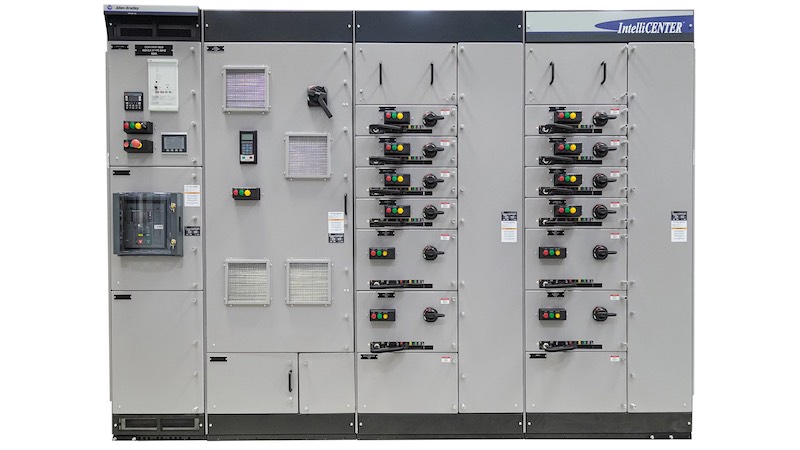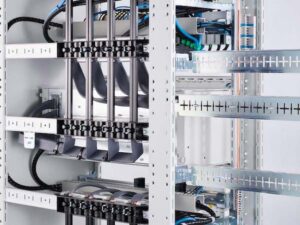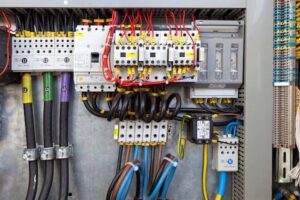
Comprehensive Guide: Testing and Maintaining Motor Control Centers (MCCs)
Motor Control Centers (MCCs) are critical components in industrial electrical systems, responsible for distributing power and managing the operation of multiple motors. To ensure reliable performance and operational safety, regular testing and maintenance of MCCs is essential. This guide outlines the importance of MCC testing, the methods involved, and how proactive inspections can prevent costly downtime while enhancing system efficiency and longevity.
1. Introduction to MCCs and the Importance of Regular Testing
Motor Control Centers serve as centralized hubs for motor control, housing components such as motor starters, variable frequency drives (VFDs), overload relays, and other protective devices—all within a single enclosure. This setup enables efficient operation and streamlined maintenance of multiple motors from one location.
Why Regular Testing Matters:
Over time, MCC components are subject to wear and degradation due to environmental factors and continuous operation. Without routine inspections, these issues can escalate into equipment failures or unplanned outages. Regular testing helps detect early signs of problems—such as overheating, loose connections, or electrical faults—allowing for timely repairs or replacements.
Testing typically includes:
- Electrical Testing – Ensures components operate within acceptable limits and protects against short circuits or overloads.
- Mechanical Inspection – Identifies physical wear, damage, or corrosion.
- Thermal Imaging – Detects abnormal heating that may indicate underlying electrical issues.
Routine testing not only extends equipment life but also ensures compliance with safety standards and regulations, reducing legal and operational risks.
2. Step-by-Step Process for Thorough MCC Testing
A structured and comprehensive testing approach is key to ensuring MCC safety and functionality. The process typically includes three main stages:
1) Visual Inspection:
Start with a detailed examination of the MCC’s exterior and interior components. Look for signs of:
- Damaged or worn wiring
- Loose terminals
- Corrosion or moisture intrusion
- Legible labels and safety markings
2) Electrical Measurements:
Use test instruments to evaluate the system’s performance:
- Voltage Testing – Confirms correct voltage levels are being supplied.
- Current Testing – Detects abnormal current flow indicating overload or imbalance.
- Resistance Testing – Identifies high-resistance joints that could lead to overheating.
- Insulation Resistance Testing – Detects potential faults or degradation in wiring.
3) Functional Testing:
Simulate normal operating conditions to verify the performance of control components:
- Motor Starters – Check correct operation under load and no-load conditions.
- Relays – Ensure accurate operation and response to signals.
- Circuit Breakers – Confirm proper trip functions under fault scenarios.
Thorough documentation of test results and findings is essential for record-keeping, future troubleshooting, and compliance audits.

3. Common Issues and Troubleshooting Techniques
While testing MCCs, several recurring problems may be encountered:
Faulty Components:
Breakers, contactors, and relays can degrade over time.
- Circuit Breakers – Test trip functionality; check for mechanical wear.
- Contactors – Inspect for pitted or burnt contacts.
- Relays – Verify correct response times and accuracy.
Loose Connections:
Loose terminals can cause arcing, overheating, and equipment damage.
- Visual Checks – Identify visibly loose or corroded connections.
- Infrared Thermography – Locate hot spots caused by poor connections.
- Torque Testing – Ensure connections are tightened to manufacturer specs.
Overloads and Short Circuits:
Motors may draw excessive current or be affected by faulty wiring.
- Overload Relays – Verify proper settings and operation.
- Insulation Testing – Detect wiring faults or short circuits.
- Motor Sizing – Ensure motors are appropriately rated for the application.
Control or Programming Errors:
Incorrect control settings or PLC logic may prevent proper operation.
- Review Control Settings – Adjust motor parameters as needed.
- Verify PLC Programs – Check for bugs or mismatches in logic.
- Consult Documentation – Refer to manufacturer manuals and wiring diagrams.

4. Importance of Documentation and Record-Keeping
Accurate and organized documentation is crucial for maintaining a reliable MCC system and demonstrating regulatory compliance.
Benefits of Record-Keeping:
- Maintenance History – Tracks all service activities, helping identify recurring issues.
- Compliance Evidence – Serves as proof during audits or inspections.
- Troubleshooting Support – Provides technicians with valuable historical data to resolve issues quickly.
Essential records include:
- Installation reports
- Maintenance logs
- Test results
- Repair and modification history

5. Recommendations for Routine Testing and Working with Professionals
Establishing a regular testing schedule is vital for early fault detection and long-term MCC health. Testing frequency should be based on:
- Manufacturer recommendations
- Age and condition of the MCC
- Operating environment
- Criticality of the connected loads
Typical intervals include quarterly, semi-annual, or annual inspections, depending on system demands.
Partner with Qualified Experts:
Engaging certified electrical professionals ensures accurate diagnostics, comprehensive evaluations, and proper adherence to safety regulations. Skilled technicians bring the expertise needed to spot hidden issues, offer maintenance recommendations, and help optimize MCC performance.
6. Conclusion
Regular MCC testing and proactive maintenance are essential for safe, efficient, and uninterrupted operations. By implementing a structured testing routine, maintaining detailed documentation, and partnering with experienced professionals, facilities can extend the life of their MCC systems, avoid unexpected breakdowns, and ensure regulatory compliance.
Professiona Switchgear supplier and manufacturer
- Zhejiang GONGSHUN Electrical Co.,Ltd (electricgs.com), Our company was founded in the late 1990s, specializing in the production of inflatable cabinets, SF6 inflatable cabinets, and various high and low voltage complete sets of electrical equipment. It has multiple subsidiaries under its jurisdiction, including high-voltage load switch branch, high-voltage circuit breaker branch, high-voltage fuse branch, and technology development branch.Our technical expertise, comprehensive product portfolio and long-term rich experience are helping many customers in need to solve their power problems. We’re happy to help at any time. Whether you need application product advice or technical assistance, our global service team is committed to providing you with the right support. For more technical information about medium voltage earthing switch, feel free to contact us, send an email to gongshun@electric-cn.com
- Our company specializes in producing 12KV-40.5KV series high-voltage electrical products: FZN58, FLN48, FLN36, FZRN25, FZN21, FN18, ZFN16, FN12, FN8, FN7, FN5, XRNT, XRNP, VS1, ZN28, ZW8, ZW32, JN15, GN19, GN22, GN24, GN30, CLXGN15-12, HXGN □ -12, DXG-12 (L), DFW □ -12 high-voltage cable branch box, CLXGN □ -12 (SF6) series inflatable cabinet 12KV and 35KV cable accessories, etc; CLVXP-12 indoor AC high voltage fixed switchgear, CL-SIS-12 compact solid insulated ring main unit, professional assembly Schneider SC6 (SF6) series load switchgear, ABB produced SFG (SF6) series load switchgear and other series products; Distribution and agency of high-voltage load switches and inflatable cabinets produced by Schneider Electric and ABB; Siemens produces the 3AJ1 series of indoor medium voltage vacuum circuit breakers and other related products. The company has a complete range of products and has been operating safely on domestic and international power grids for a long time, receiving unanimous praise from both new and old users. Among them, multiple products such as FZRN25, FN12, FLN36-12, XRNT-12 have been exported to various countries and regions in East Asia, South Asia, Southeast Asia, Africa, and the United States.
